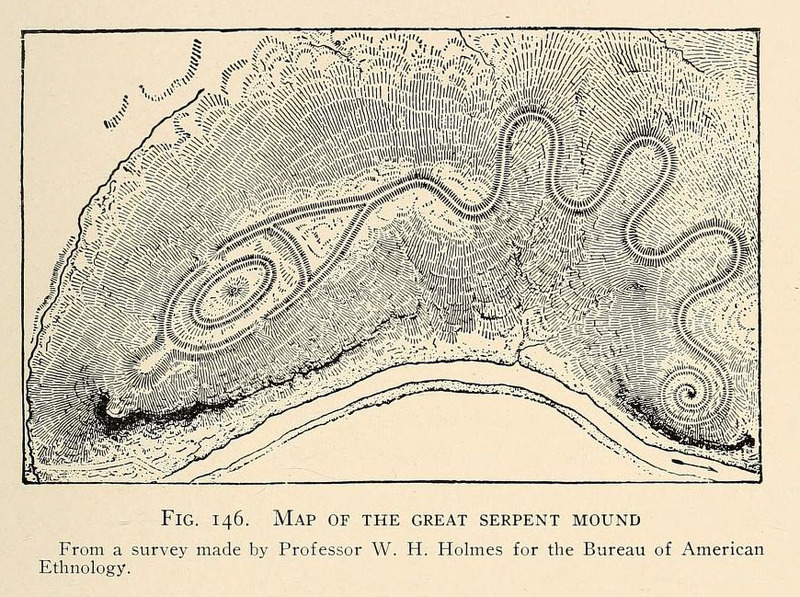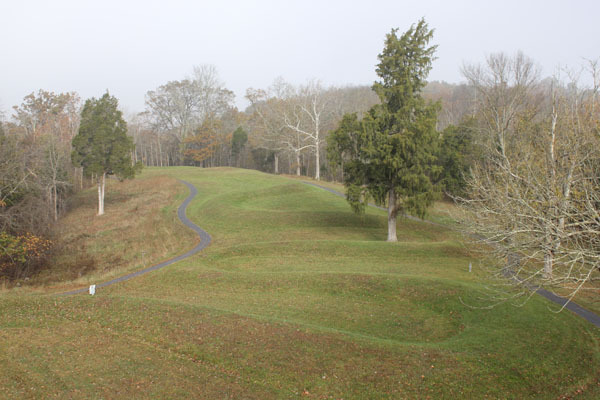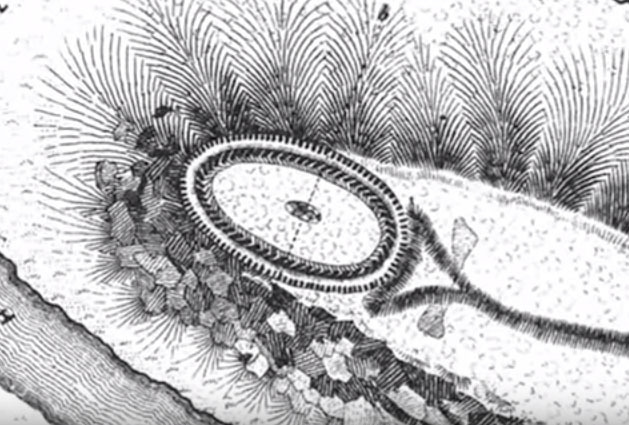Serpent Mound
Serpent Mound, measuring 1,300 ft in length and between three to five feet in height, is the largest serpent effigy in the world. Archaeologists remain divided over whether the Adena culture built it and the Fort Ancient culture refurbished it (proposed due to nearby Adena burials), or whether it was built solely by the Fort Ancient culture, although the latter is currently the leading theory. If the latter, the image of the snake may have been borrowed from the Mississippian culture, the principal trading partners of the Fort Ancient culture, where it was given particularly prominent respect.
The mound is built on a high plateau overlooking Brush Creek, in Adam’s County, Ohio, and conforms to the natural topography of the plateau. It is made principally of clay, and, unusually, contains no artifacts. Its head has given rise to varied speculation: the oval shape has been variously interpreted as an egg, the serpent’s eye, or the sun. Its alignment with both the summer and winter solstice, and, if the Fort Ancient culture truly built it, its construction shortly after the appearance of Halley’s Comet in 1066 A.D., certainly suggest a keen appreciation of astronomy.
Due to its obvious shape, European settlers often associated it with moral tales they knew well: for example, it was associated by a pastor with the serpent in the Garden of Eden. Current Native Americans carry their own associations and spiritual importance: Mekoce Shawnee Chief Frank Wilson says:
“If you count the curves in the Serpent, there’s seven of them, there’s seven curves before it gets to the head. And seven, the way I was taught, for the Shawano [Shawnee] people, is the seven gates that one must go through to reach spirituality, or enlightenment, as people call it, to become a dawan, a medicine person. So each curve, a person walked the snake. They walked the serpent. And there were certain things they had to accomplish on each curve of the snake’s back. And as they accomplished this they moved on, and when they reached the head, they reached a point where everything was completely stripped away except their spirit.”
Unsurprisingly, Serpent Mound was threatened by destruction in the later nineteenth century and was saved by the efforts of Frederic W. Putnam, director of the Peabody Museum. After a visit in 1890, he wrote:
“Was this a symbol of the old serpent faith, here on the western continent? Reclining on one of the huge folds of this gigantic serpent, as the last rays of the sun, glancing form the distant hilltops, cast their long shadows over the valley, I mused on the probabilities of the past; and there seemed to come to me a picture as of a distant time, and with it came a demand for an interpretation of this mystery. The unknown must become known.”
This passionate interest led Putnam to raise $5,880 from enthusiastic Bostonian donors, and in 1900 Harvard gave the site to the state of Ohio.





